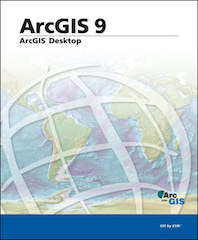ArcView is a complete desktop GIS package, with tools for mapping, analysis, data editing, and map publishing.ArcView can classify and symbolize data, integrate a wide array of imagery, and use data distributed over the Internet. In addition, ArcView provides tools for creating/editing data, creating graphs/charts, and performing statistical and spatial analysis. ArcView makes it easy to integrate data from many sources and work with the data geographically.Presenting results and ideas is easy with ArcView. Students can make great-looking publication-quality maps and create interactive displays by linking charts, tables, drawings, photographs, and other files. Teachers will find that communicating geographically is a powerful way to inform and motivate students.ArcView 9.2 is the most recent platform for ArcView; it maintains the base functionality of ArcView 3.x and adds many new features.In addition, there are several optional extensions that allow schools to expand the capabilities of ArcView for further analysis and exploration. Two of these extensions are Spatial Analyst and 3D Analyst.ArcGIS Spatial Analyst extension (version 9.2)The Spatial Analyst extension gives ArcView full raster modeling capabilities and introduces a broad range of analysis functions which were previously unavailable to desktop GIS users. Spatial Analyst allows users to create, query, map, and analyze cell-based raster data and to perform integrated vector-raster analysis.In the classroom, Spatial Analyst is useful for working with continuous data surfaces, such as the Digital Elevation Models and Canada Land Inventory (CLI) grids available on ArcCanada. Using Spatial Analyst, students can create hillshade, slope and aspect themes from the Digital Elevation Models and analyze land suitability using CLI grids ArcGIS 3D Analyst extension (version 9.2)The 3D Analyst extension allows users to incorporate 3D data and views into their analysis.In this classroom, 3D Analyst can also be used when working with surfaces, such as the Digital Elevation Models.As with Spatial Analyst, 3D Analyst can generate slope, hillshade and aspect models. In addition to these features, 3D Analyst will perform viewshed analysis, surface area and volumetric calculations, steepest path delineation, and many other functions. These operations are useful in natural resources, physical geography, travel and tourism and environmental studies. It supports Triangulated Irregular Networks (TINs), and three dimensional shapefiles, and also enables dynamic, interactive viewing of 3D data. Students will find the easy to use 3D Analyst to be an exciting and engaging tool to study their data. A web training site is provided by ESRI Canada, a French interface, and three years of maintenance and support.

Website of the Ontario Software Acquisition Program Advisory Committee
